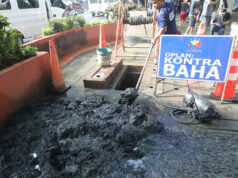FOUR major Southeast Asian cities are at risk for an expected rise in sea levels amid their current inability to manage flooding, the Organization for Economic Cooperation and Development (OECD) said.
According to OECD Green Growth Studies, which evaluated Bangkok, Bandung, Indonesia, the northern Vietnamese port city of Hai Phong, the Iskandar region of Johor in the south of Peninsular Malaysia, and Cebu, all except Bandung were vulnerable over the long-term to both rising sea levels and ocean storm surges, as well as localized flooding emanating from intense rainstorms.
Asia suffers disproportionately from losses caused by natural disasters, the OECD said. Between 1980 and 2017, loss of life from various disasters exceeded 1.2 million, or 71% of the total global loss of life, while financial losses were reckoned at $1.69 trillion, or nearly 40% of the global total, the OECD said.
The 2011 floods that hit Bangkok and other parts of Thailand, a key manufacturing hub for the auto industry, are reported to have been among the costliest natural disasters since the 1980s. The 2011 flood resulted in losses to the global supply chain of $44.2 billion.
The study found that disaster prevention and response planning were inadequate in all five cities.
Among the faults found were the absence of comprehensive hazard assessment and mapping, putting low-income communities at risk in times of disaster.
The study found that Cebu was the most advanced among the five cities.
In the Philippines, Disaster Management Plans are mandatory under the Disaster Risk Reduction Management Act or Republic Act No. 10121, and enabling laws also ensure that sufficient financial resources are allocated to local government units to implement disaster risk reduction programs.
However, the OECD said implementation at the city level is a challenge. Among 13 local government units in the Cebu area, only one has completed disaster risk reduction management plans.
The OECD added that land use policies in the five case study cities do not always take into account disaster risk management, which has resulted in continued urban development in flood-prone areas.
It said in Bandung, residents continue to settle and build in flood-prone areas, increasing the city’s exposure to further flooding risk.
In Hai Phong, the conversion of rice fields upstream of the northern branch of the Red River watershed for commercial and residential use has significantly reduced rainwater retention and placed additional demands on Hai Phong’s stormwater drainage system.
Meanwhile, in Cebu, the Roadmap for Sustainable Urban Development, developed by the Metro Cebu Development and Coordinating Board and the Japan International Cooperation Agency, have proposed “urban limits” that will restrict land use in zones at risk of flooding or landslide in order to avoid exposing infrastructure, businesses, and people unnecessarily to risk.
The next step is to translate the “urban limits” into legally-binding comprehensive land use plans and zoning ordinances at each local government unit in Metro Cebu.
The study also noted that Cebu needs to invest in ensuring water supply for disasters. The rise of sea levels and continuous groundwater over-extraction continues, compromising the supply of fresh water.
The OECD also recommended that the five cities develop a disaster risk financing mechanism and promote the use of information and communication technologies. — Vince Angelo C. Ferreras



